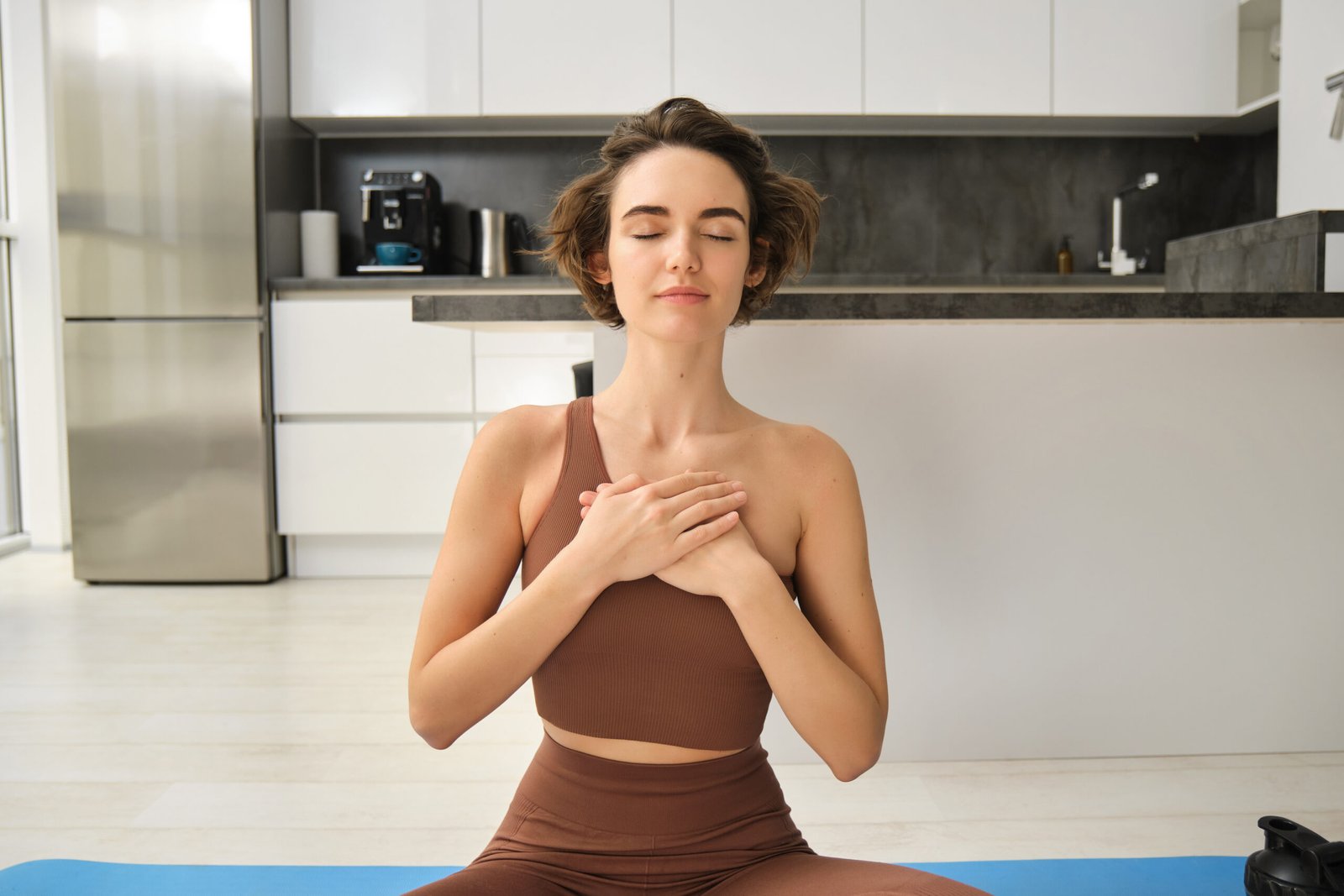Yoga for Beginners: 5 Yoga Poses for Heart Health
Heart disease is a prevalent and serious health concern that affects millions of people worldwide. However, there’s hope in the form of yoga—a holistic practice that can contribute significantly to cardiovascular wellness. In this article, we delve into the therapeutic potential of yoga for heart disease, providing insights into the yoga poses and practices that can support heart health.
Understanding Heart Disease: Heart disease encompasses various conditions affecting the heart and blood vessels. These conditions include coronary artery disease, heart failure, arrhythmias, and more. It’s a leading cause of disability and mortality globally. Lifestyle changes, including yoga, can play a crucial role in managing and preventing heart disease.
Yoga for Heart Health: Yoga offers a multi-faceted approach to improving cardiovascular health. Through asanas (yoga poses), pranayama (breath control), and mindfulness, yoga can help in the following ways:
- Stress Reduction: Chronic stress is a significant risk factor for heart disease. Yoga’s relaxation techniques can lower stress hormones and promote mental well-being.
- Lower Blood Pressure: Several yoga poses encourage circulation and can help reduce high blood pressure, a common factor in heart disease.
- Improved Heart Rate Variability: Yoga can enhance heart rate variability, linked to better cardiac health.
- Weight Management: Regular yoga practice supports weight management, reducing the risk of obesity and its associated heart disease risk factors.
Yoga for beginners: Poses for Heart Health
1. Mountain Pose (Tadasana):
How to Do It:
- Stand with your feet together, toes touching, and arms at your sides.
- Root down through your feet, engage your thigh muscles, and draw your tailbone slightly downward.
- Lift your chest and roll your shoulders back, extending your arms alongside your body with palms facing forward.
- Gaze softly forward, and take deep, mindful breaths.
Contradictions:
- There are typically no direct contradictions for Mountain Pose. However, individuals with severe balance or posture issues may need to practice with support or adapt the pose to a seated position.
2. Cobra Pose (Bhujangasana):
How to Do It:
- Lie face down with your hands beneath your shoulders and legs extended.
- Inhale, gently lift your chest off the ground while keeping your pelvis and legs grounded.
- Roll your shoulders back, elongate your neck, and look upward.
Contradictions:
- Avoid Cobra Pose if you have a herniated disc or severe back injury.
- Pregnant individuals should practice with caution, possibly modifying the pose to avoid pressure on the abdomen.
3. Bridge Pose (Setu Bandhasana):
How to Do It:
- Lie on your back with knees bent and feet hip-width apart.
- Press your feet into the mat, lift your hips, and interlace your hands under your back.
- Roll your shoulders under and maintain your neck’s natural curve.
Contradictions:
- Individuals with neck, shoulder, or knee issues should approach with care or consult a yoga instructor for appropriate modifications.
- Avoid Bridge Pose if you have recent injuries or conditions that affect the spine or pelvis.
4. Camel Pose (Ustrasana):
How to Do It:
- Kneel on the mat with knees hip-width apart.
- Place your hands on your lower back for support.
- Inhale, arch your back and reach back to grasp your heels with your hands.
- Keep your pelvis forward and expand your chest.
Contradictions:
- People with severe back or neck issues should avoid Camel Pose.
- It’s not recommended for those with high or low blood pressure.
- If you have knee problems, consider modifying the pose or using props for support.
5. Corpse Pose (Savasana):
How to Do It:
- Lie on your back with your legs extended and arms by your sides.
- Close your eyes, relax your entire body, and focus on your breath.
Contradictions:
- Corpse Pose has no direct physical contradictions.
- However, it may not be suitable for individuals with certain mental health conditions, as it requires complete relaxation and stillness, which can be challenging for some.
It’s essential to practice these yoga poses mindfully, respecting your body’s limitations and consulting a qualified yoga instructor or healthcare professional if you have any medical concerns or conditions.
Explore these recommended yoga products on Amazon to enhance your morning yoga routine.
Cork Yoga Blocks Set with strap
Aromatherapy Fragrant Oil Humidifier Vaporizer with Remote Control
Pranayama for Heart Health:
- Nadi Shodhana (Alternate Nostril Breathing): Balances the nervous system and reduces stress.
- Bhastrika (Bellows Breath): Increases heart rate variability and improves cardiovascular function.
Conclusion: Yoga is a valuable complementary approach to managing heart disease and maintaining cardiovascular wellness. By incorporating yoga into your routine and working with a qualified yoga instructor, you can experience the benefits of a healthier heart and a more fulfilling life.
Please note that individuals with heart disease should consult a healthcare professional before beginning a new yoga practice. This article is for informational purposes and not a substitute for medical advice.
THANK YOU!!!
Startough -Stay Tough!
